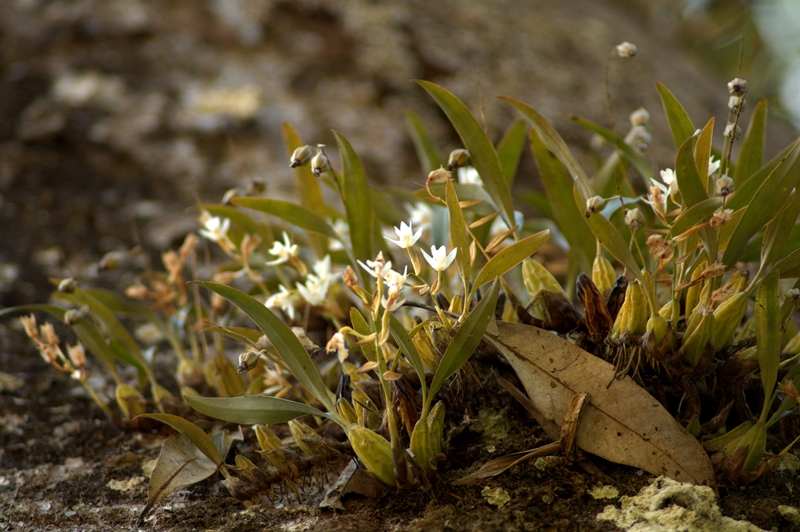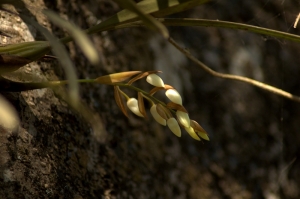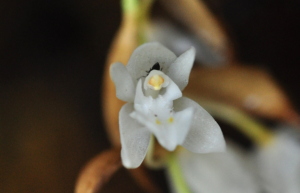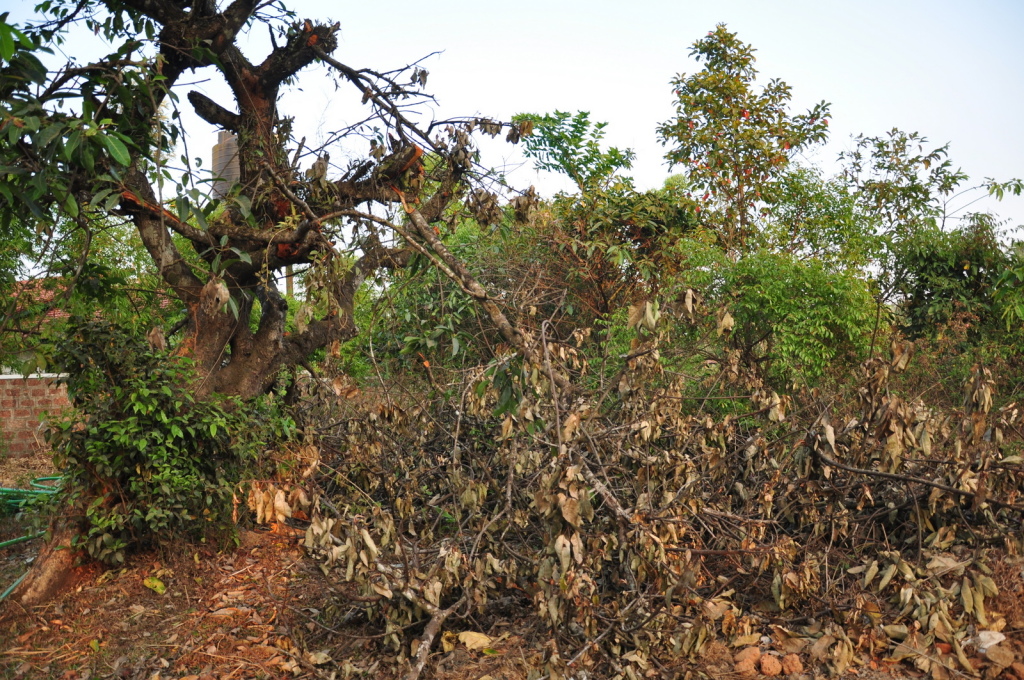Species of the Month – March 2015
Coelogyne breviscapa Lindl.
The Genus: Coelogyne Lindl. 1821
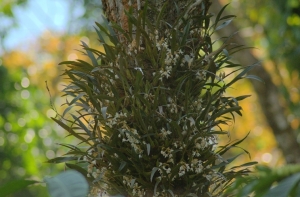 Lindley described the orchid genus Coelogyne in 1821, naming it Caelogyne (from the greek ‘koilos’ = ‘hollow’ and ‘gyne’ = ‘female’) because of the concave stigma. Soon after he corrected the spelling to Coelogyne in 1825. Coelogyne is characterized by a free, never-saccate lip with high lateral lobes over the entire length of the hypochile, and smooth, papillose, toothed or warty keels. Coelogyne species are distributed from India through Southeast Asia, southwest China, the Philippines and the islands of Indonesia to as far east as New Guinea and islands of the southern and eastern Pacific.
Lindley described the orchid genus Coelogyne in 1821, naming it Caelogyne (from the greek ‘koilos’ = ‘hollow’ and ‘gyne’ = ‘female’) because of the concave stigma. Soon after he corrected the spelling to Coelogyne in 1825. Coelogyne is characterized by a free, never-saccate lip with high lateral lobes over the entire length of the hypochile, and smooth, papillose, toothed or warty keels. Coelogyne species are distributed from India through Southeast Asia, southwest China, the Philippines and the islands of Indonesia to as far east as New Guinea and islands of the southern and eastern Pacific.
The genus comprises over 200 species; they can be found from tropical lowland forests to montane rain forests from sea level up to 3000 m elevation. A few species grow as terrestrials or even as lithophytes in open, humid habitats. Most species are characterized by a fairly large number of medium-sized to large flowers with delicate colors and a sweet scent and are pollinated by bees, beetles or wasps.
A selection of species with long, pendulous, multi flowered inflorescences is widely cultivated and known as the necklace orchids. The number of recent artificial hybrids published indicates the growing commercial interest in this group. The cooler growing species such as Coelogyne fimbriata, Coelogyne ovalis, Colegyne fuliginosa, Coelogyne cristata, Coelogyne flaccida, Coelogyne nitida originate in the Himalayan region of India and southeast Asia. They require a decided rest period during winter during which they receive no feed, very little water (enough to prevent pseudobulbs shriveling), cool to cold temperatures and high light. These conditions seem to aid flowering in spring for some growers, though others report that more constant conditions can also produce regular flowering.
Coelogyne breviscapa Lindl.
Synonyms: Coelogyne angustifolia Wight 1851; Pleione breviscapa (Lindl.) Kuntze 1891
Common Name: The Short-Inflorescence Coelogyne
Some prominent characteristics: Inflorescence bears 4 to 8 flowers, simultaneously opening, white in color of 25 mm size with persistent floral bracts of size 20-25 mm. Narrowly ovate pseudobulbs that are reddish brown in color of size 5 cm X 1.5 cm with 1 to 2 linear oblong leaves of 15 cm X 1.5 cm each. Lip is white in color with a prominent yellow disc.
Habitat: Found in southern India and Sri Lanka in montane forests on tree branches and on rocks in grasslands at elevations of 1800 to 2000 meters as a miniature to small sized, cool growing epiphtye or lithophyte.
Flowering time: March – April
Threats:
Due to several developmental activities, orchid habitats are constantly being destructed. It is a very common sight in the Western Ghats that many of the trees are being felled for road widening or fixing the pipeline or the electricity line. Such activities poses severe threat for orchids like Coelogyne to survive and replicate themselves within their habitats.
References:
1. Reorganizing the orchid genus Coelogyne: a phylogenetic classification based on morphology and molecules, Barbara Gravendeel
2. Indian Orchids: Guide To Identification and Culture, Udai C. Pradhan
Article by: Srikanth Parthasarathy
